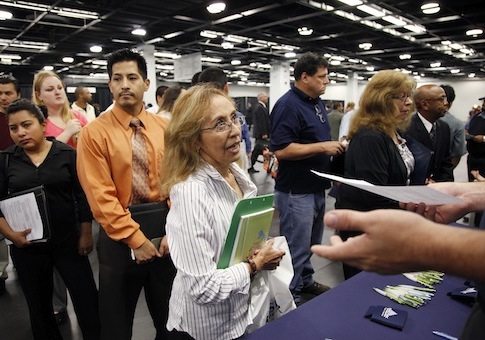There were 94,609,000 Americans not participating in the labor force in October, an increase of 425,000 people from the previous month, according to data released by the Bureau of Labor Statistics on Friday.
The bureau counts those not in the labor force as people who do not have a job and did not actively seek one in the past four weeks.
The labor force participation rate, which is the percentage of the population that has a job or actively looked for one in the past month, declined from 62.9 percent in September to 62.8 percent in October.
The unemployment rate for all Americans declined to 4.9 percent from 5.0 percent in the previous month. This measure does not account for those individuals who have dropped out of the labor force and simply measures the percent of those who did not have a job but actively sought one over the month.
The "real" unemployment rate, otherwise known as the U-6 measure, was 9.5 percent, which declined from 9.7 percent in the previous month. Democrats such as Sen. Bernie Sanders (I., Vt.) and Federal Reserve chair Janet Yellen have said this measure accounts for discouraged workers and those working part time instead of full time for economic reasons and is more representative of the labor market.
There were 5,889,000 Americans working part time in October who would rather have a full-time job but cited economic reasons for not having such employment. This number declined by 159,000 over the month.
According to the bureau, involuntary part-time workers are "persons who indicated that they would like to work full time but were working part time (1 to 34 hours) because of an economic reason, such as their hours were cut back or they were unable to find full-time jobs."
"This so-called-recovery has been extremely weak," said National Federation of Independent Business president Juanita Duggan. "Small business, which represents 99.7 percent of all U.S. employers and employs 58 million Americans, is the engine of job creation. Until small business owners have a clearer sense of what the future will bring, they'll keep their foot on the brakes."
"Small business owners are paralyzed by uncertainty," she said. "The combination of record uncertainty, rising labor costs, and a shortage of qualified workers is depressing small business job creation."
